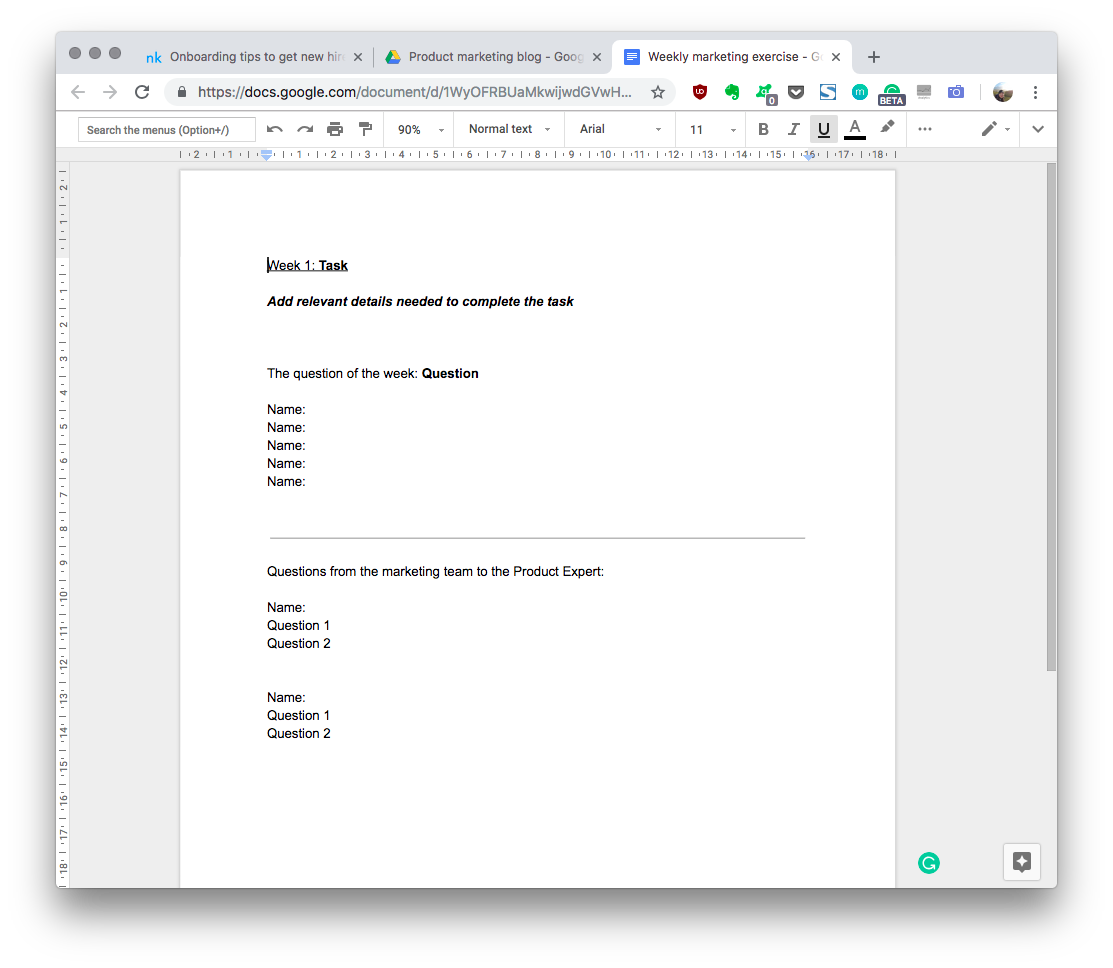How to educate your marketing team about your product
To truly understand what you’re selling / marketing, you need to know how it works, what / who it works for and why people keep coming back to use it.
Six months ago, I began running workshops with the marketing team to educate them about the product. However, instead of making my team sit through presentations with screenshots and telling people what the product can do, I decided on a more hands-on approach to get the team to experience what our product can do.
The Set up
Pick a common use case for your system
Work with Customer Success to find out what’s the most common use case for your product. For us, because our team already had a pretty basic understanding of the system, we chose the most complex use case instead.
Outline what the set-up process looks like for this user segment
Outline all the specifics about the use case. We had to set up a booking system for a boat tour company with complex schedules and multiple pricing options per trip. On top of that, this company also had different prices for depending on the day of the week and the month in the year.
Break this down into weekly tasks
Then, we broke down this giant task into small chunks that could be completed in 30 minutes each week. When breaking down your weekly task, make sure add some form of measurement for you, the facilitator, to track completion. Each week, I created a new document with the task and relevant details at the top, followed by a question or two that people could only answer after completing the task.
Schedule weekly 30-minute meetings with your team and someone who can act as the “product expert” (usually someone from CSM or Product)
Every week, we’d get together to share our experience, ask the product expert any questions we might have or to solve issues we faced. This feedback was collected and when relevant, passed on to the Product team. It also helped that my team leader made this exercise mandatory for everyone, team leader included.
Set up internal accounts for everyone involved
Before starting, make sure everyone in the team has full access to your product, not just a free trial or a “basic” version of your software. Check that everyone’s email address, usernames and passwords are valid before starting.
Click here to access the template. Make a copy for your team to use.
Introduction Week
Spend much of the first session explaining what’s going on and the purpose of everything that’s going on.
In your introduction, make sure to include:
Purpose of the workshops
Structure of each session (see “Weekly Meetings” session)
How long these workshops will last (we took 12 weeks in total, where 10 weeks were task-focused and 2 weeks were “catch-up” weeks that were scheduled when needed)
Effort expected from team members to get the most out of these sessions
Share the first week’s exercise with everyone. I used Google Docs as it allowed everyone to add their answers to the same document, and leave comments when the task description wasn’t clear.
Weekly meetings
10 - 20 minutes: Go through last week’s exercise with the Product Expert
Use this time to address all the issues raised in the “Question from the marketing team to the product expert” section. If part of your team is remote, remember to share your screen via Google Hangouts or any other similar services. The time spent on this part will depend on how complicated that week’s task is. Be flexible and allow an extra week for the task if necessary.
5 minutes: Review responses from “Question of the week” to check for understanding
If someone hasn’t answered the question or gave an answer that seemed unexpected, feel free to discuss that. What I’ve found is that the earlier discussion would have already uncovered 90% of the issues your team might face so by now, you should have a good gauge for who understands and who doesn’t understand how the product works.
5 minutes: Run through next week’s task
Give the team a quick summary of the task they need to complete for the week ahead and answer any preliminary questions they might have. If something is raised up that you don’t have an answer for, check with the Product Expert and refine the task description as needed.
additional ways to benefit from these workshops
This exercise mirrored the onboarding process many of our customers experience and captured some of their day-to-day use of the software. It put our team in a great position to provide feedback to our Product Managers and engineers, and highlight any kinks that might exist in the system. When going through the task and raising up issues we encountered, we took screenshots and short clips of parts of the system that needed some attention. After each week’s session, I passed on this feedback to the Product team and follow-up with them a couple of weeks afterwards.
Another thing you could do is end each session by coming up with ideas on how to market specific feature sets to your target audience. This could also include reviewing existing content around those features, and finding ways to improve messages or A/B test ideas.
This also became a HR tool for our company to onboard new hires. Once the overall curriculum was set, I simply had to distill it down to the basics to come up with a 4-four crash course for new hires. It has yet to be tested but I am sure to share my experience once I’ve tested it out a few times!

